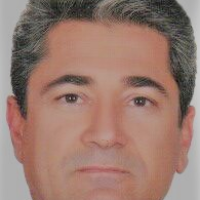Values, benefits and use of Calotropis procera in Southern Iran
Author(s):
Article Type:
Research/Original Article (بدون رتبه معتبر)
Abstract:
Calotropis procera (Aiton) W. T. Aiton (Asclepiadaceae) is a native shrub growing in sub-tropical regions including the southern coasts of the Persian Gulf and Oman Sea from Khuzestan to Baluchistan, Iran. The economic benefits of the shrub include the use of latex and extract to control of plants pests and diseases, the use of natural rubber in the rubber industry, the manufacture of composites and insulators with stem fibers of Calotropis, the production of pure yarn from valuable fibers in the bark, and the use of seed oil for fuel production. The bioassay results indicated that the ethanol extract of C. procera caused a significant mortality on larvae in different stages of Thiacidas postica. It can be used to control a number of pests, including insect defoliator. The extract of C. procera has considerable insecticide, fungicide, anti-feeding, and oviposition-inhibition effects. Its antifungal properties have also been observed and can be used naturally or synthetically in the production of environmentally friendly insecticides and fungicides.
Language:
Persian
Published:
Iran Nature, Volume:5 Issue: 1, 2020
Pages:
41 to 48
https://magiran.com/p2100235
مقالات دیگری از این نویسنده (گان)
-
Public Participation in Sustainable Natural Resource Management
Ahmad Rahmani *, Ali Alizadeh Aliabadi, Ali Akbar Mehrabi, Parviz Garshasbi, Hossein Badripour, Mehdi Shafiee, Ali Asghar Palouch, Vahid Jafarian, Ataolla Ebrahimi, Mohammad Avatefi Hemmat, Khosro Sagheb Talebi, Jalal Henareh Khalyani, Yasser Ghasemi Arian, Mohammad Khosrowshahi, , Ebadollah Abulhasaniya
Iran Nature, -
Interaction effect of irrigation, calcium and nitrogen on tomato blossom end rot disorder
Y. Moshtaghi, T. Basirnia *, F. Karampour
Journal of Research in Plant Pathology, -
Introduction of the destructive agents affecting wild almond Amygdalus scoparia forests in Koh-Siah Dashti area in Bushehr province
S.R. Golestaneh*, F. Karampour, N. Farrar
Iranian Journal of Forest and Range Protection Research,




